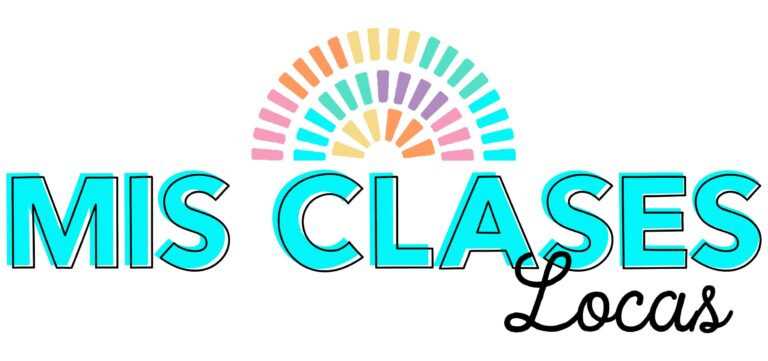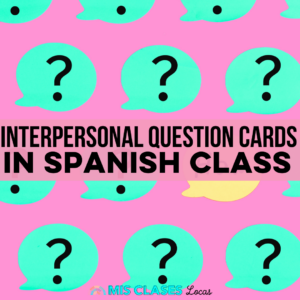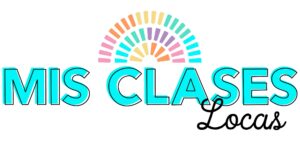Inside: How to Movie Talk in the World Language Classroom. How to use Clip Chat to make short video clips more comprehensible for Spanish students.

Learning about Movie Talk
This past weekend at CI: Comprehensible Iowa Conference I went to a really great session on Movie Talk, from Haiyun Lu (@Haiyunlu & @ignitechinese on Twitter). You can tell that Haiyun is a teacher coach because she did an excellent job explaining, letting us practice the skills on our own, and then elaborating with more detail.
Forst of all, Movie Talk is a technique for language learning developed by Dr. Ashley Hastings. Here are a few more resources on the Movie Talk technique.
What is Movie Talk?
Movie Talk is an activity for the acquisition driven language classroom involving playing a short, muted video clip, while the teacher explains it in COMPREHENSIBLE language.
First, the teacher frequently pauses the video clip, asking questions, about which circle and repeats the target structures. The goal is not to narrate everything happening but instead focus on comprehensible language that narrows in on the structures that the teacher wishes to emphasize.
My junior high exploratory students LOVE Movie Talks and now I have a better idea of how to make them even more effective in my classes.
Update: What is described as Movie Talk in this post, is now sometimes called “Clip Chat” instead. I will use the term Movie Talk in this post, but you can substitute the term Chlip Chat if you prefer.

Where do you find Movie Talk videos?
- Top 7 Short Spanish Movies on Disney+
- Movie Talk Database – can search by target structure
- iFLT/NTPRS/CI Teaching Facebook Page – teachers are always posting new ones
- Search your target phrases in Google & see what videos come up!
How do you prepare for a Movie Talk? – Check out the image below by Haiyun Lu
- Know the plot
- Know the characters
- Clarify the purpose
- Plan natural pause points
- Practice narration
- Select target phrases
- Take screenshots (she says optional, but this is my #1 tip for success!)
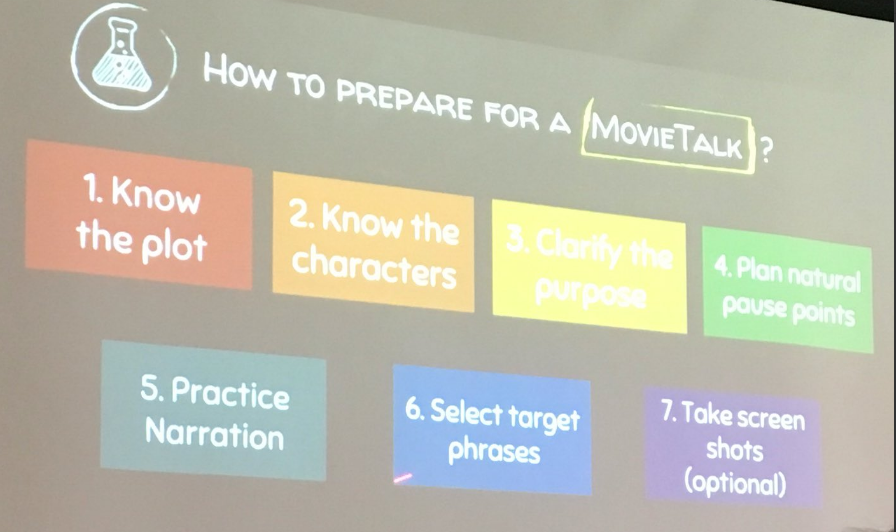 |
| How to Prepare for a Movie Talk – from a presentation at #CIIA16 by Haiyun Lu |
As you can see above, preparing for a Movie Talk is about practicing and ensuring that your target language description of the video clip focuses on your target structures. It is very helpful for a newbie to write out what you are going to say in the target language, so as to not get too bogged down in details, and instead keep your focus on comprehensible language.
How do you prepare YOUR STUDENTS for a Movie Talk?
- First, explain exactly what you will be doing, watching a short, muted, clip while pausing it A LOT. Prepare students that you will ask questions during the video, and that you are looking for a response like when you story ask. Let them know you will watch the whole video with sound AT THE END.
- Next, introduce the target structures. By the time I do a Movie Talk, I have already introduced the structures by writing them on the board, using personalized questions and answers, completing a class story, and maybe more.
- **New idea from Haiyun Lu** Finally, create a short reading to introduce the video, using the target structures, WITHOUT spoiling the ending. While I have used Movie Talk quite a bit this year, I had never done this very helpful step. This would allow students to see the language you will be using while describing, and help give the visual learners some assistance while listening to the movie talk. Haiyun suggests trying to summarize the video in 5 sentences in the target language.
An Example – Video – Baby brings dad a drink
We practiced in the session using this cute video. Here is an example process.
Target Structures – Introduce to students
- s/he gives to – le da
- s/he has a cup- tiene una taza
- s/he takes a drink – toma
Practice Reading
- First, give the below reading to novice students, or project and read as a class. Circle and discuss the target structures as they are used in the reading. Notice it does not give away the ending, but rather gives some suspense to watch to find out what happens.
- Then, you could also have screen shots that you show as well to help visually explain.
English
The baby has a cup. The baby walks to and gives the cup to his dad. The dad takes a drink, says “thank you”, and gives the cup to the baby. The baby gives another cup to the dad and the dad takes another drink. Where is the baby and what is in the cup?
Spanish
El bebé tiene una taza. El bebé camina al papá y le da la taza a su papá. Su papá toma, dice “gracias,” y le da la taza al bebé. El bebé le da otra taza al papá y el papá toma. ¿Dónde está el bebé y qué tiene la taza?
How to Do the Movie Talk
- First, play the muted video clip pausing at each scene.
- Next, describe in comprehensible target language, not your thinking language. This means you will focus on the compressible words that your students know, as well as the target structures.
- Then, ask questions as you go. Restating the answers as well. For example, when you pause the first scene of the baby, you could ask the following questions:
- Is this a girl or a boy?
- Is this a baby or a dad?
- Does the baby have a cup?
- What does the cup have?
- Is the baby walking or running?
- Also, make sure to focus on the target structures. You can even have students tally up how many times you use each structure, or have this as a class job for someone who needs a task to stay focused while listening.
- Finally, once done, show the whole video, un-muted.
Possible Extension or Assessment to Movie Talk
When I have done Movie Talk in the past, it is usually just that, describing the video and then moving on to the next activity. Here are some ideas of how to use the same video to extend the conversation or complete an assessment.
- Do a Up/Down Listening Assessment.
- Have all students put their heads down.
- Give True/False statements about the video and students put thumb up/down to signify true or false.
- This is a quick formative way to see if students get it.
- The Marker Game
- 1, 2, 3, ¡SALTA!
- Put screen shots of the video on a piece of paper & have students write out.
- This could be a mini writing assessment.
- Cut up little screen shots of video & have students retell video to partner.
- This could be a mini speaking assessment.
- Write up a few statements in English as a listening comprehension mini quiz.
- Ex. Choose the correct answer – The baby has (milk/water) in the cup.
Many thanks to Haiyun Lu for really solidifying how to make Movie Talk work best in a comprehensible input classroom!
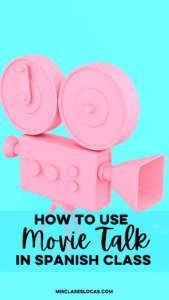
What are your favorite short videos to use for Movie Talk?
More Comprehensible Input Posts
- Fun CI Spanish Classroom Games to Increase Engagement
- Comprehensible Input Activities
- High-Frequency Verb Unit to Start Spanish 1
- Persona Especial
- Create a CI Curriculum for Spanish 1-4
- 1st week of Spanish Class using CI
- Wading in the CI pool
- Introducing the past tense in Spanish class using high frequency verbs
